The Geopolitical Chessboard: How US-China Tech Rivalry Shapes the AI Chip Market and Corporate Strategy
Welcome back, fellow explorers of the financial markets! Today, we’re diving deep into a fascinating intersection of technology, geopolitics, and corporate strategy that is currently reshaping the global landscape for artificial intelligence. We’ll explore how the intensifying rivalry between the United States and China, particularly concerning access to cutting-edge semiconductor technology, is forcing major players to make strategic moves that could have significant implications for investors.
Think of the global technology supply chain as a complex, interconnected web. When tension arises at one crucial node, the ripples are felt everywhere. Right now, the node in focus is the market for advanced AI chips – the powerful processors that train and run the large language models and AI applications driving the next wave of technological innovation.
Our journey begins with a close look at one of China’s tech giants, Tencent, and a recent disclosure that highlights just how high the stakes are in this global competition. We will uncover the story behind Tencent’s strategic stockpiling of NVIDIA’s powerful AI accelerators and what it means for their future, the market, and the broader tech war.
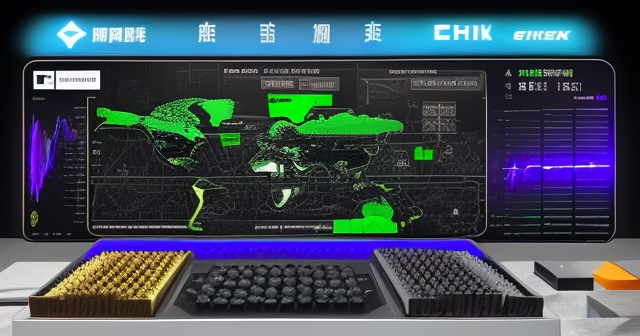
Tencent’s strategic stockpiling is just one facet of a larger geopolitical struggle. The ramifications of this competition can be analyzed through several key aspects:
- Global Supply Chain Dynamics: How tensions impact manufacturing and distribution.
- Investment Opportunities: Identifying sectors poised for growth amid the rivalry.
- Technological Innovation: The role of competition in driving advancements.
Tencent’s Strategic Reveal: Building an AI Chip Inventory Against the Tide
In a recent earnings call, Tencent President Martin Lau made a significant announcement that sent ripples through the tech and financial communities. He confirmed that the company has amassed a substantial inventory of advanced AI chips from NVIDIA. This isn’t just a routine purchase; it’s a strategic accumulation specifically targeting NVIDIA’s H800 chips, which are among the high-performance accelerators crucial for demanding AI workloads.
Why is this significant? Because these chips are precisely the kind that have become central to the technology access restrictions imposed by the U.S. government on China. By confirming a large existing stockpile, Tencent signals a proactive measure taken to ensure the continuity of their critical AI development efforts, especially for their proprietary AI model, Hunyuan.
Imagine you are building a cutting-edge factory, but you anticipate that the supply of a vital component might be cut off. What would you do? Naturally, you’d try to secure as much of that component as possible before the restrictions take effect. This appears to be the strategic playbook Tencent followed, recognizing the potential disruption posed by escalating U.S. export controls.

Decoding the “Couple Generations”: What the Stockpile Means for AI Development Cycles
Martin Lau’s statement wasn’t just about having chips; it was about having enough chips to sustain their AI development for a specific period. He indicated the stockpile of H800 chips is sufficient to support the training and evolution of Tencent’s Hunyuan AI model for “at least another couple of generations,” or “several generations.”
What does “couple of generations” mean in the context of AI model development? AI models, especially large language models (LLMs) like Hunyuan, evolve rapidly. A new “generation” can refer to significant architectural improvements, training on vastly larger datasets, or achieving breakthrough performance benchmarks. Each new generation typically requires substantial computing power – immense clusters of high-performance GPUs like the H800 – for the intensive training process.
Therefore, saying they have enough chips for “several generations” implies a considerable buffer. It suggests that Tencent has secured the computational horsepower needed to continue advancing its core AI capabilities for a significant period, potentially bridging a gap until alternative hardware becomes viable or accessible. This timeframe is critical for maintaining competitiveness in the fast-paced AI race.
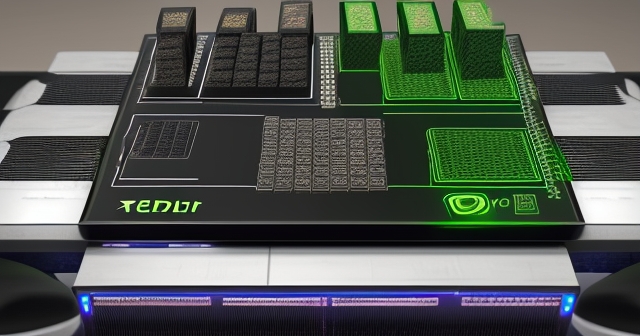
Anticipating the Curbs: The Proactive Strategy Behind Tencent’s Ordering
A key detail in Tencent’s disclosure is the timing of their chip acquisition. The company was reportedly among the early movers in placing orders for the H800 chips, specifically doing so before the latest round of stricter U.S. export restrictions came into effect. This timing wasn’t coincidental; it reflects a strategic foresight anticipating the tightening geopolitical environment.
The U.S. government has progressively tightened controls on the export of advanced semiconductors and related manufacturing equipment to China, citing national security concerns and aiming to prevent Beijing from using this technology for military modernization. The restrictions implemented in October 2022, and subsequently updated, specifically targeted high-end AI accelerators like NVIDIA’s A100 and its slightly modified China-specific versions, the A800 and H800.
By ordering proactively, Tencent effectively created a window of opportunity for itself. They managed to get essential hardware into their data centers before the door largely closed. This wasn’t just a matter of logistics; it was a calculated risk assessment and a demonstration of how major corporations are navigating the complexities of global trade policies shaped by geopolitical rivalries.
The Ripple Effect: How Other Chinese Firms Are Also Building Reserves
Tencent isn’t alone in this strategic stockpiling effort. The response to the U.S. export controls has been a broader trend across the Chinese tech industry. Facing similar concerns about future access to critical AI hardware, other prominent firms have also reportedly been building up their inventories of NVIDIA chips.
One notable example mentioned is 01.AI, a startup founded by well-known AI expert Kai-Fu Lee (who also founded Sinovation Ventures). Reports indicate that 01.AI has also managed to secure a substantial quantity of NVIDIA chips, potentially enough to support their operations for an extended period, perhaps around 18 months. This suggests that the concerns about future supply interruptions are widespread.
This collective behavior of major Chinese tech companies rushing to secure chips before sanctions bite harder illustrates the immediate impact of the export controls. It creates a surge in demand ahead of restrictions and highlights the perceived dependency on foreign high-end hardware for critical AI development work within China.
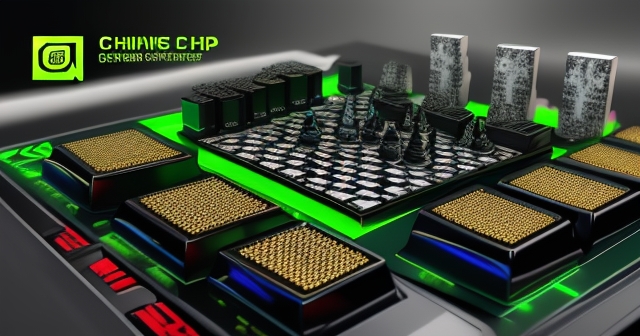
The Hammer Falls: Understanding the Specifics of US Export Controls on AI Chips
To fully grasp the strategic response from companies like Tencent, we need to understand the nature of the U.S. export controls themselves. These regulations are not aimed at semiconductors generally but specifically target those deemed critical for advanced computing and potential military applications, particularly high-performance AI chips.
The rules, significantly expanded and tightened over the past couple of years, impose restrictions on exporting chips above certain performance thresholds to China. These thresholds are often defined by metrics like ‘total processing performance’ and ‘performance density’ to prevent companies from selling slightly downgraded versions that still offer substantial capabilities for AI training.
NVIDIA’s A100 was the initial target, leading to the creation of A800 and H800 versions designed to fall below the initial performance caps for the China market. However, subsequent updates to the rules have further tightened these thresholds, eventually impacting even these modified chips and requiring licenses for export. The U.S. rationale, as stated by Washington, is rooted in national security – preventing China from leveraging these advanced semiconductors for military modernization and building sophisticated AI capabilities that could pose a threat.
Navigating the Immediate Challenge: Internal AI Development Versus Cloud Business
While Tencent’s stockpile provides a crucial buffer for its internal AI development, particularly the training of its Hunyuan model, the impact of the sanctions is not entirely neutralized. Martin Lau acknowledged that the restrictions could still pose challenges, particularly regarding the company’s cloud services business.
Think about the different ways a tech company uses powerful AI chips. Firstly, they use them internally for their own research and development – training their foundational AI models, developing new AI features, and optimizing their own services. Secondly, they sell access to this computing power as part of their cloud services offering, allowing other companies and developers to rent the computational resources needed for their own AI projects.
The stockpile primarily secures the first use case – internal development. However, selling access to state-of-the-art computing power via cloud services requires a continuous supply of the *latest* and most powerful chips to remain competitive. If Tencent cannot readily access the newest generations of high-end chips due to export controls, it could potentially constrain their ability to offer cutting-edge AI cloud services to external customers in the long term, impacting a key growth area for the company.
The Long Game: China’s Accelerating Drive for Chip Self-Sufficiency
The U.S. export controls, framed by Beijing as “weaponizing trade and tech issues,” have had a profound strategic impact: they are significantly accelerating China’s push for technological self-sufficiency, particularly in semiconductors. The sanctions have made it abundantly clear to Chinese policymakers and corporate leaders that reliance on foreign suppliers for critical components carries significant geopolitical risk.
This realization has fueled massive investments in domestic semiconductor research, development, and manufacturing. The goal is to build a robust, end-to-end domestic supply chain, from chip design tools (EDA software) and manufacturing equipment to fabrication plants (fabs) and, crucially, high-performance chips themselves.
For companies like Tencent, this means not just securing existing foreign supply where possible (through stockpiling) but also actively seeking and fostering domestic alternatives. The long-term strategy is to reduce dependence on foreign technology to mitigate the risk of future sanctions or supply disruptions. This represents a significant strategic shift with potentially massive implications for the global tech industry structure.
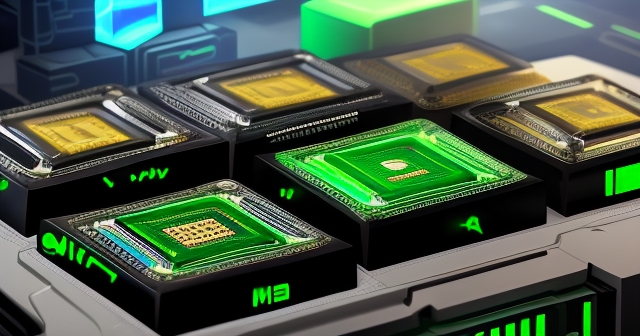
Emergence of Domestic Alternatives: Huawei and Beyond
In response to the pressure, domestic Chinese chip designers are stepping up their efforts. While currently lagging behind the absolute cutting edge offered by companies like NVIDIA, their capabilities are rapidly improving, and demand from domestic tech giants is creating a strong incentive for growth.
Huawei, despite facing its own set of U.S. restrictions on other aspects of its business, has emerged as a leading domestic player in AI chips with its Ascend series. The Ascend 910, for instance, is often cited as a primary alternative to NVIDIA’s A100 in China for AI training workloads. While assessments suggest the Ascend 910 currently performs below the A100, the gap is closing, and domestic players are investing heavily in catching up.
Other Chinese firms and research institutions are also working on various types of AI accelerators. The sanctions have effectively created a protected market and an urgent mandate for these domestic players to innovate rapidly. Companies like Tencent and Baidu are not just passively waiting; they are actively testing, evaluating, and beginning to integrate these domestic chips into their infrastructure, starting with less critical workloads.
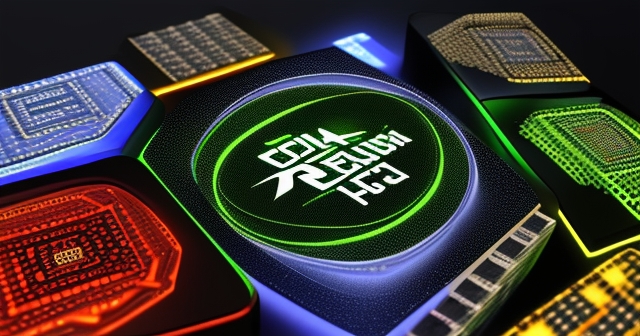
Optimization and Adaptation: Making the Most of Available Hardware
Facing constraints on accessing the latest foreign chips, Chinese tech companies are also adopting strategies to maximize the utility of the hardware they already possess or can still acquire. This involves optimizing how they use their existing high-performance chip inventories.
One approach is to dedicate the most powerful chips, like the stockpiled H800s, primarily to the most demanding tasks: training their foundational AI models. Training a large language model from scratch or significantly updating it requires immense, sustained computational power. By reserving the high-end foreign chips for this core activity, they can ensure their key AI development milestones are met.
For less intensive tasks, such as running inference (using a trained model to generate responses or make predictions), or for training smaller, more specialized models, companies can potentially leverage a wider range of hardware, including domestically produced chips or slightly older-generation foreign chips that are not subject to the strictest export controls. This strategy involves careful workload management and optimizing software to run efficiently on diverse hardware architectures.
Reshaping the Global AI Chip Market: Competitive Dynamics
The U.S. export controls are poised to significantly alter the competitive landscape of the AI chip market, particularly within China. Before the sanctions, NVIDIA held a dominant position, reportedly commanding over 90% of the Chinese market for high-end AI accelerators. This market was a significant source of revenue and growth for the company.
The restrictions inevitably create headwinds for foreign suppliers like NVIDIA and potentially AMD, limiting their access to a crucial growth market. While they may develop new, less powerful chips specifically designed to meet the revised export thresholds, the market opportunity for their most advanced products is curtailed.
Conversely, the sanctions create a powerful impetus and opportunity for domestic Chinese chip companies. With foreign competition restricted, they have a clearer path to gain market share, secure crucial design wins from major domestic customers (like Tencent, Baidu, ByteDance, etc.), and receive strong government and investor support. This situation could foster the rapid development of a competitive domestic AI chip ecosystem in China over the coming years, leading to a more bifurcated global market.
What This Means for Investors and Traders: Connecting Strategy to Markets
So, what does this complex interplay of geopolitics, corporate strategy, and technology mean for you as an investor or trader? Understanding these dynamics is crucial because they directly impact the prospects of major technology companies and the broader market.
For instance, the situation affects NVIDIA’s growth trajectory. While demand from other global markets remains strong, restricted access to China impacts a previously key revenue stream. Investors need to assess how well NVIDIA can navigate these restrictions and maintain its dominance through innovation and developing compliant products.
For Chinese tech companies, their ability to successfully navigate the chip restrictions – by effectively utilizing stockpiles, developing or integrating domestic alternatives, and optimizing their software and hardware infrastructure – will be a critical factor in their future performance. Companies like Tencent and Baidu need uninterrupted access to compute power to remain competitive in the AI race. Their success in securing this access, either through reserves or domestic solutions, directly impacts their potential for innovation and profitability.
Furthermore, the rise of domestic Chinese chip companies presents new investment opportunities, although they also come with significant risks and uncertainties associated with scaling cutting-edge manufacturing and competing in a complex market.
Watching how these companies adapt, how quickly domestic capabilities mature, and how geopolitical tensions evolve will be key for identifying potential winners and losers in the global technology landscape.
| Key Players | Stockpile Strategy | Impact on Market |
|---|---|---|
| Tencent | Stockpiling NVIDIA H800 chips | Maintaining competitive edge in AI development |
| 01.AI | Building reserves ahead of sanctions | Ensuring operational sustainability |
| Huawei | Investing in domestic AI chip production | Reducing reliance on foreign tech |
Emergence of Domestic Alternatives: Huawei and Beyond
In response to the pressure, domestic Chinese chip designers are stepping up their efforts. While currently lagging behind the absolute cutting edge offered by companies like NVIDIA, their capabilities are rapidly improving, and demand from domestic tech giants is creating a strong incentive for growth.
Huawei, despite facing its own set of U.S. restrictions on other aspects of its business, has emerged as a leading domestic player in AI chips with its Ascend series. The Ascend 910, for instance, is often cited as a primary alternative to NVIDIA’s A100 in China for AI training workloads. While assessments suggest the Ascend 910 currently performs below the A100, the gap is closing, and domestic players are investing heavily in catching up.
Other Chinese firms and research institutions are also working on various types of AI accelerators. The sanctions have effectively created a protected market and an urgent mandate for these domestic players to innovate rapidly. Companies like Tencent and Baidu are not just passively waiting; they are actively testing, evaluating, and beginning to integrate these domestic chips into their infrastructure, starting with less critical workloads.
What This Means for Investors and Traders: Connecting Strategy to Markets
So, what does this complex interplay of geopolitics, corporate strategy, and technology mean for you as an investor or trader? Understanding these dynamics is crucial because they directly impact the prospects of major technology companies and the broader market.
For instance, the situation affects NVIDIA’s growth trajectory. While demand from other global markets remains strong, restricted access to China impacts a previously key revenue stream. Investors need to assess how well NVIDIA can navigate these restrictions and maintain its dominance through innovation and developing compliant products.
For Chinese tech companies, their ability to successfully navigate the chip restrictions – by effectively utilizing stockpiles, developing or integrating domestic alternatives, and optimizing their software and hardware infrastructure – will be a critical factor in their future performance. Companies like Tencent and Baidu need uninterrupted access to compute power to remain competitive in the AI race. Their success in securing this access, either through reserves or domestic solutions, directly impacts their potential for innovation and profitability.
Furthermore, the rise of domestic Chinese chip companies presents new investment opportunities, although they also come with significant risks and uncertainties associated with scaling cutting-edge manufacturing and competing in a complex market.
FAQ
Q:What is the significance of Tencent’s stockpiling of NVIDIA chips?
A:Tencent’s stockpiling ensures the continuity of their AI development against potential U.S. restrictions.
Q:How do U.S. export controls affect the global AI chip market?
A:They create both limitations for foreign suppliers and opportunities for domestic manufacturers in China.
Q:What strategies are Chinese firms adopting in response to chip shortages?
A:They are stockpiling chips, investing in domestic production, and optimizing existing hardware use.
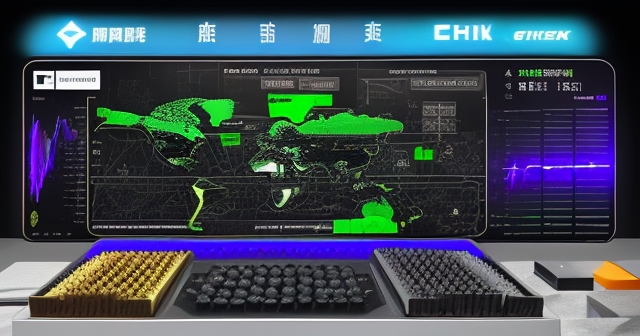
留言